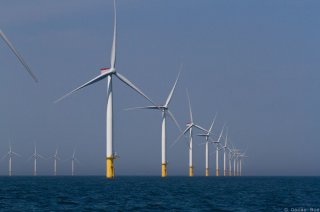
Project
Scour protection design for biodiversity enhancement in North Sea Offshore Wind Farms
The BENSO project will develop and implement methods and techniques for biodiversity enhancement within offshore wind farms. The project focuses on the scour protection layer, which consists of rocks and surrounds the base of offshore wind turbines. Scour protection layers can be designed in such a way that certain species will profit, such as fish, crabs and lobsters.
In this project, the impacts of scour protection on species and ecosystem scale will be quantified by desk studies, field experiments in offshore windfarms and modelling studies. The smart ecological designs will be made available to the offshore windfarm industry by reports, workshops and a guide.
Background
As part of the transition from fossil fuels to renewable energy, the Dutch government aims to realise five offshore wind farms of 700 MW before 2023 and an additional 1,000 MW between 2023 and 2030. A further increase to more than 35 GW in 2050 by offshore wind energy is needed to reach climate goals. The Dutch government identified several challenges to the successful scaling-up of offshore wind energy. One of these is the ecological impact of offshore windfarms on the North Sea ecosystem, which can be either negative (bird collisions, disturbance, construction effects) or positive (introducing hard substrate in a mainly soft sediment ecosystem, bottom-trawling ban).
There is increasing international evidence for the ecological opportunities and positive effects of offshore wind farms on marine ecosystems. Scour protection functions as settling substrate for marine organisms and habitat for fish, crabs and lobsters. This has motivated the Dutch Ministry of LNV to use the development of offshore windfarms to strengthen the North Sea ecosystem by enhancement of ecological functioning in windfarms to improve the status of policy-relevant species.
Aims of the BENSO project
The project contributes to the integration of offshore wind energy in the environment (ecology and multi-use) and aims to:
- To create economical value by developing, testing and implementing smart ecological design for scour protection in offshore wind farms to enhance biodiversity locally and in the wider ecosystem.
- Implement smart monitoring techniques in monitoring programmes and maintenance operations.
Activities
The BENSO project will develop and implement methods and techniques for biodiversity enhancement within offshore wind farms. The positive impacts of scour protection on species and ecosystem scale will be quantified by desk studies, field experiments in offshore windfarms and modelling studies. Smart monitoring techniques will be implemented in experiments, regular monitoring and in maintenance operations. Smart ecological design of scour protection will be developed and tested. The measured positive effects of new, ecological scour protection on the wider North Sea ecosystem will be quantified in modelling studies. The smart ecological designs will be made available to the offshore windfarm industry by reports, workshops and a guide.
Results
The expected impacts from the BENSO project are:
- Economical – Support of multi-use of offshore windfarms by increasing populations of commercial species of fish, lobster and crab
- Economical - The development and implementation of smart ecological design for scour protection will lead to significant cost-reduction if scour protection can remain on the seafloor after decommissioning
- Economical - Cost-efficient methods developed to enhance and monitor biodiversity will provide competitive advantage for Dutch research organisations and offshore wind industry
- Ecological – Biodiversity enhancement of the North Sea ecosystem is an important goal of national and international policy and legislation (Marine Strategy, OSPAR)
- Governance - Increased biodiversity enhancement by offshore windfarms will increase public support for the energy transition and increased populations of commercial species will reduce the conflicts with the fisheries sector
- Scientific – Improved knowledge of biodiversity enhancement in natural habitats and by artificial structures will contribute to our understanding of the functioning of marine ecosystems and to marine conservation worldwide